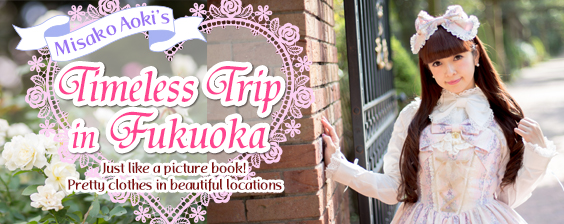- Home
- feature
- Culture Watch (Latest News & I...
- What exactly the recent “chuni...
What exactly the recent “chunibyou” (lit. Middle school 2nd year illness) syndrome is and how to cope

"chunibyou (lit. Middle school 2nd year illness) syndrome" - What it is and how to cope
"chunibyou" is a word that constantly plagues us in the world of anime, frequently appearing in anime titles and such. Finding its origins in that of pop culture, a radio program originally birthed this word to denote the adolescent stages of growth, mainly in terms of physical height; however, it is now also used to refer to any sort of behavior, adolescent or otherwise that characterizes this age range.
In this installment, we’d like to sum up and shed a new light on what this so-called “chunibyou” syndrome is.
[Related Article: Theatrical length anime of "Love, Chunibyo & Other Delusions" is released on September 14.]
In this installment, we’d like to sum up and shed a new light on what this so-called “chunibyou” syndrome is.
[Related Article: Theatrical length anime of "Love, Chunibyo & Other Delusions" is released on September 14.]

To start off with, let’s walk through what were thought to be indicative symptoms from when this term was first coined.
1.Listening to undefined genres and minor bands or artists of the same generation
2.Beginning to insist the need for privacy from parents
3.Starts to recite theories on economics and history, eventually coming to the conclusion that the situation in Japan is not ideal
4.Creates a character identity and sometimes uses this to deviate from standard behaviors
There are many other distinguishing symptoms; however, anything typically said of an adolescent teenager can be characterized as such.
In relation to the widespread use of the internet, this trend has begun to spread more rapidly and has worsened in recent years.
Below are examples I’ve taken off the internet of some classic “chunibyou” cases.
The Internet Benkei Archetype
This is a type of “chunibyou” that came into existence and has been perpetuated by the internet. Usually they are characterized as being surprisingly average in person but continually post outrageous and offensive statements over the internet.
Masked by the anonymity that can be found on the computer, these people enjoy channeling a different side of themselves, convinced that it is a world set apart from reality. In extreme cases some may even begin to nurse delusions in reality and begin to think, “This is not the real me.”
This is the type of person who has few friends but is very gregarious over the web and is connected to a lot of people, such as having many followers on Twitter.
The Minor Archetype
This stems from relatively long ago and is in which subculture trends, minor bands, novels, music and all else that does not fall under a mainstream category are closely adhered to and cherished.
An example of a person who falls under this category would be someone who suddenly starts recommending certain songs from minor bands to their friends and fervently asking them to listen. If they don’t get the enthusiastic response they were expecting, they will likely counter with a: “Well, I suppose you just wouldn’t understand,” and seem strangely satisfied with themselves. Following this, should the artist they were recommending finally make a major debut and begin to gain a following he/she might start in as if to take credit for the accomplishment and begin spouting off declarations such as, “I knew these albums would sell.”
The Nounai (intracranial) Fantasy Archetype (AKA: The Nounai Jump Archetype or the Nounai Gan-gan Archetype)
This person is defined by their obvious detachment from reality and commonly exhibits tendencies to fall into role plays and assume the personalities of fictional characters. Staging an alien world, they immerse themselves in fantasies such as the weekly or monthly boy’s mangas (Jump, Gan-gan) .
Going a step further, some individuals not only take on the personalities of the characters they had previously fancied themselves to be, but the lines between reality and their fantasy world begin to blur and this imaginary setting takes over. Aside from continuously quoting lines and sayings (with a self-satisfied expression) from these anime and manga scenes they are playing out, other symptoms are very subtle and easily overlooked due to their generally harmless nature. The only issue would be should these symptoms be coupled with the Benkei characteristics, they may become very aggravating and burdensome to the people around them.
In this edition, we introduced you to three different archetypical models (above) and have outlined and laid the foundation to classification methods of “chunibyou.”
I think the invention of the internet has aggravated the problem, as virtual reality makes it so much easier to slip away from the moment and your immediate surroundings. It has also undoubtedly contributed to the spread of it.
However, if you let the person be, oftentimes they will return to the present on their own and a few years later they will seem completely normal.
Should there be someone with similar symptoms to these in your life, it is said the best cure is to treat the person warmly.
Upon maturity or otherwise, when the individual finally overcomes this “chunibyou” syndrome, memories from this period come in flashbacks. Many say they are extremely embarrassing and painful to relive.
Flashbacks are predominantly triggered by reading through blogs, notes, and diaries left by themselves from around the time the delusions begun to set in.
Alternatively, if you or someone around you is having grappling with this problem it may be fun to keep note for them and enjoy these funny memories a few years down the road.
1.Listening to undefined genres and minor bands or artists of the same generation
2.Beginning to insist the need for privacy from parents
3.Starts to recite theories on economics and history, eventually coming to the conclusion that the situation in Japan is not ideal
4.Creates a character identity and sometimes uses this to deviate from standard behaviors
There are many other distinguishing symptoms; however, anything typically said of an adolescent teenager can be characterized as such.
In relation to the widespread use of the internet, this trend has begun to spread more rapidly and has worsened in recent years.
Below are examples I’ve taken off the internet of some classic “chunibyou” cases.
The Internet Benkei Archetype
This is a type of “chunibyou” that came into existence and has been perpetuated by the internet. Usually they are characterized as being surprisingly average in person but continually post outrageous and offensive statements over the internet.
Masked by the anonymity that can be found on the computer, these people enjoy channeling a different side of themselves, convinced that it is a world set apart from reality. In extreme cases some may even begin to nurse delusions in reality and begin to think, “This is not the real me.”
This is the type of person who has few friends but is very gregarious over the web and is connected to a lot of people, such as having many followers on Twitter.
The Minor Archetype
This stems from relatively long ago and is in which subculture trends, minor bands, novels, music and all else that does not fall under a mainstream category are closely adhered to and cherished.
An example of a person who falls under this category would be someone who suddenly starts recommending certain songs from minor bands to their friends and fervently asking them to listen. If they don’t get the enthusiastic response they were expecting, they will likely counter with a: “Well, I suppose you just wouldn’t understand,” and seem strangely satisfied with themselves. Following this, should the artist they were recommending finally make a major debut and begin to gain a following he/she might start in as if to take credit for the accomplishment and begin spouting off declarations such as, “I knew these albums would sell.”
The Nounai (intracranial) Fantasy Archetype (AKA: The Nounai Jump Archetype or the Nounai Gan-gan Archetype)
This person is defined by their obvious detachment from reality and commonly exhibits tendencies to fall into role plays and assume the personalities of fictional characters. Staging an alien world, they immerse themselves in fantasies such as the weekly or monthly boy’s mangas (Jump, Gan-gan) .
Going a step further, some individuals not only take on the personalities of the characters they had previously fancied themselves to be, but the lines between reality and their fantasy world begin to blur and this imaginary setting takes over. Aside from continuously quoting lines and sayings (with a self-satisfied expression) from these anime and manga scenes they are playing out, other symptoms are very subtle and easily overlooked due to their generally harmless nature. The only issue would be should these symptoms be coupled with the Benkei characteristics, they may become very aggravating and burdensome to the people around them.
In this edition, we introduced you to three different archetypical models (above) and have outlined and laid the foundation to classification methods of “chunibyou.”
I think the invention of the internet has aggravated the problem, as virtual reality makes it so much easier to slip away from the moment and your immediate surroundings. It has also undoubtedly contributed to the spread of it.
However, if you let the person be, oftentimes they will return to the present on their own and a few years later they will seem completely normal.
Should there be someone with similar symptoms to these in your life, it is said the best cure is to treat the person warmly.
Upon maturity or otherwise, when the individual finally overcomes this “chunibyou” syndrome, memories from this period come in flashbacks. Many say they are extremely embarrassing and painful to relive.
Flashbacks are predominantly triggered by reading through blogs, notes, and diaries left by themselves from around the time the delusions begun to set in.
Alternatively, if you or someone around you is having grappling with this problem it may be fun to keep note for them and enjoy these funny memories a few years down the road.
 Measures and provisions are being taken at various locations in an effort to prevent the spread of the new coronavirus.
Measures and provisions are being taken at various locations in an effort to prevent the spread of the new coronavirus.













